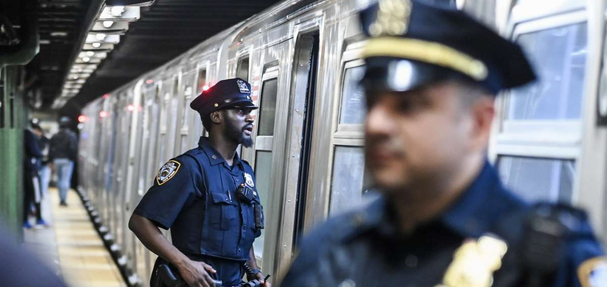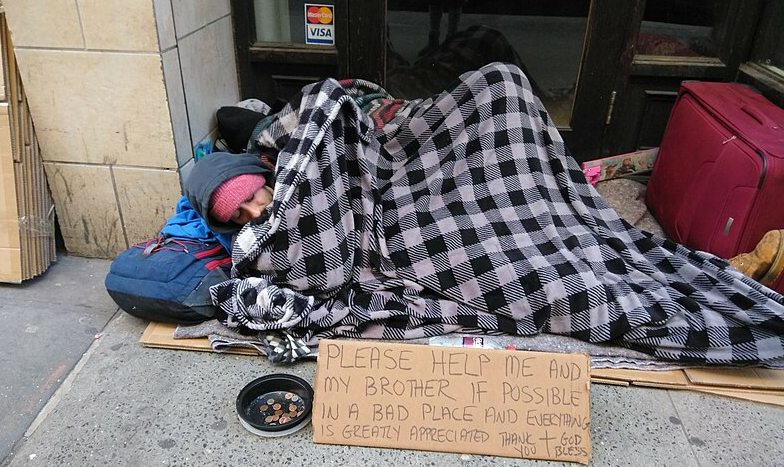Photos: We The Commuters\MTA
With crime emerging as one of the most dominant issues in the upcoming midterms nationwide, politicians in New York have given particular attention to violence — and the perception of violent threats — in the city’s subway system.
Mayor Eric Adams and Gov. Kathy Hochul last weekend ordered 1,200 additional NYPD officers to patrol the subway system — after already adding hundreds more in January — and over the next three years, the MTA plans to install security cameras on every single subway car to help solve crimes and make riders feel safer.
Rep. Lee Zeldin, the Republican candidate for governor, has seized on riders’ fear as a key issue in his campaign.
“People who have changed their behavior – they’re not riding the subway at the same hours. Maybe they’re Jewish, they take their yarmulke off because they’re afraid of being attacked,” Zeldin said during a debate with Hochul on Tuesday night.
But just how dangerous is it to ride the subway?
Here are the crime stats:
Overall, major felony crimes of murder, burglary, grand larceny, assault, rape and robbery show a 42% increase this year, compared to 2021. But if you compare those same stats to 2019, there has been a 4% decrease.
There were 3,534 crimes — including misdemeanors — aboard transit between January and September, according to the NYPD. In 2019, when the subways were full of people, there were 3,495 crimes in the same time period. That represents a 1% increase in crime.
By one measurement, playgrounds are actually more dangerous than the subways. There have been 27 shootings on playgrounds so far this year, while there have been 14 in the transit system.
Walking could be considered more dangerous than riding the rails. There have been 88 pedestrians killed by vehicles so far this year, according to the Department of Transportation. That’s roughly one person killed every three days on city streets.
Didn’t the NYPD say the subways were safe?
Just last month, NYPD Chief of Department Kenneth Corey, the police department’s top uniformed officer, said straphangers had experienced a remarkably safe summer, noting that crime in transit made up less than 2% of all crime in the city.
“That is at or near an all-time low for crime in transit,” Corey said on September 19th. “What I’m seeing right now is measurable sustained progress in addressing these conditions.”
But the rosy rhetoric came to an end after a rash of violence on the subways that shook the NYPD and MTA. On September 30th, an argument on an L train ended with a man stabbed to death. And in October, a Citi Field worker was randomly stabbed in a Bronx subway station and a 15-year-old was shot to death on an A train in Rockaway.
“Last month when I sat here at this meeting and I spoke of how we came out of the summer months, May through Labor Day, with overall crime reductions when compared to pre-pandemic reporting years, and that was true,” NYPD Transit Chief Jason Wilcox said at Monday’s MTA committee meeting. “We have now experienced a number of significant acts of violence on our subways.”
Why is safety so critical to the MTA?
An MTA survey released in August found that only 54% of customers felt safe or very safe on trains, and nearly 70% of those surveyed said there weren’t enough police in the subway system.
“It’s scary because my kids and family members ride it, so it’s scary. So I really hope they do something about it, so people feel safe while they’re traveling,” Jemma Parris told Gothamist at the Jackson Heights-Roosevelt Avenue station last week.
That fear represents a major problem for the MTA. A new analysis of MTA finances by the state comptroller predicts a $4.6 billion budget gap in four years if current ridership trends continue.
But a perceived lack of safety is only one reason ridership remains low. Office occupancy in Manhattan is projected to surpass 50% by the end of this year, according to one analysis. And the tourism industry expects there to be 56.3 million people visiting the city by the end of the year, which is about 85% of 2019 levels.
The MTA is already saying it will need a new revenue stream to make up for the projected shortfall from lack of fares. The MTA hopes to get back to 1.3 billion riders a year in 2026 — a far cry from 2015, when subway ridership hit an all-time high of 1.8 billion riders a year.
Source: We the Commuters\Reporting by Stephen Nessen, Rebecca Redelmeier and Samantha Max












